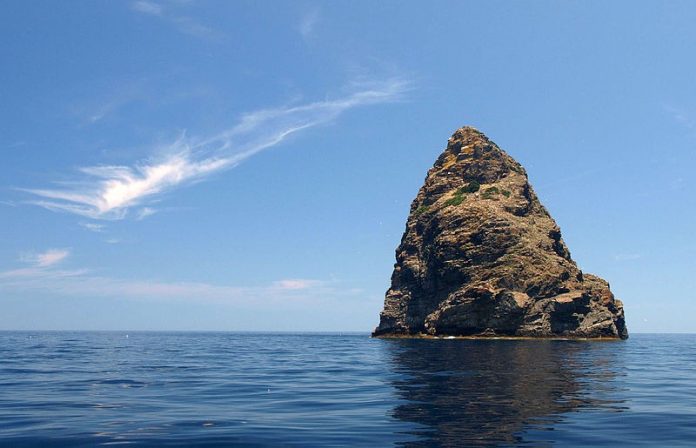The island of Jabuka, which means apple in Croatian, is a 97-meters-tall uninhabited volcanic island located in the Adriatic Sea; around 52 kilometers west of the island of Vis. Jabuka, along with Brunswick, is the only two Croatian islands that are entire of volcanic origin. Together with Palagruza, which is only part of volcanic origin, the three islands form an area called the “Adriatic Volcanic Triangle”.
Brusnik, Jabuka, as well as some parts of Komiska bay on the island of Vis and some parts of Palagruza originated from an eruption of magma due to the breakup of the Pangea prehistoric continent over 200 million years ago. Jabuka has charismatic properties due to the presence of magnetite, a naturally happening iron oxide, in the rocks that originate the magnetic needles of compasses of passing ships to go awry. The island is both a remarkable and frightening sight during nice weather in summer but in winter, when the winds blow causing large waves, Jabuka turns into a life-threatening adventure.
Though some say that ships actively avoid the island because of its magnetic anomaly, truth is, the island lies far from all sea routes. Therefore, boats can hardly be seen in the vicinity except for those who have made the island their destination. But getting to “Jabuka” can be really difficult. Moreover, standing alone in the deep waters, “Jabuka” is exposed to all winds, and since even the fragile winds cause large waves in the open sea, it takes a lot of skilled maneuvering and luck to avoid crashing into this volcanic rock.
Furthermore, the shoreline is not appropriate for docking, and there’re no bays that could keep your boats safe from the wind. The steep cliffs make it difficult to build shelter and the surrounding waters are 200 meters deep and not appropriate for anchoring. In addition, the rocks are smooth without natural protrusions where the boats could be tied.
The sea surrounding Jabuka, though, is a tremendous fishing ground that entices several brave fishermen. A very small number of plant and animal species have also adapted to the rough climate, including two endemic species a plant called knapweed and an animal species of a black lizard.
Some 50 years ago, the island was home to another endemic type of carnation but is now extinct. In 1958 the island was declared a geological monument of nature. Moreover, when there were no motorboats, only the valiant, most enduring fishermen dared go to the island in order to make it available for their families by catching large fish and trapping valued lobsters.
Read More – The Colorful Reed Flute Cave China












